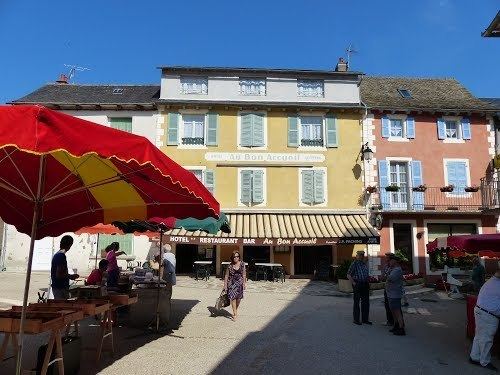Intercommunality Lévézou Pareloup Area 46.91 km² Local time Saturday 11:02 PM | Region Occitanie Canton Cassagnes-Bégonhès Time zone CET (UTC+1) Population 880 (1999) | |
 | ||
Weather 2°C, Wind SE at 10 km/h, 64% Humidity | ||
Manu chao 02 04 2014 arvieu
Arvieu (Occitan: Arviu) is a French commune in the Aveyron department in the Occitanie region of southern France.
Contents
- Manu chao 02 04 2014 arvieu
- Map of 12120 Arvieu France
- Festival manifestation tout en zic la rue ketanou arvieu
- Geography
- History
- Administration
- Demography
- Civil heritage
- Religious heritage
- Notable people linked to the commune
- References
Map of 12120 Arvieu, France
The inhabitants of the commune are known as Arvieunois or Arvieunoises.
Festival manifestation tout en zic la rue ketanou arvieu
Geography
Arvieu is located some 23 km south by south-east of Rodez and 7 km north of Alrance. Access to the commune is by the D56 road from Pont-de-Salars in the north-east passing through the commune and the village and continuing south to Durenque. The D82 branches off the D56 north of the village and goes north to Flavin. The D577 branches off the D56 in the south of the commune and goes west to Salmiech. The commune is entirely farmland except for some small patches of forest.
The eastern border of the commune is the Lac de Pareloup. The Céor river rises in the east of the commune and flows west through the village then south forming part of the western border before continuing west to join the Viaur at Saint-Just-sur-Viaur. The Ruisseau de Glauzeilles rises in the north of the commune flowing west then south-west, forming the north-eastern border of the commune, to join the Céor. The Ruisseau de Calieres rises in the east of the commune and flows north to join the Vioulou just north of the commune.
History
Administration
List of Successive Mayors
(Not all data is known)
Demography
In 2010 the commune had 865 inhabitants. The evolution of the number of inhabitants is known from the population censuses conducted in the commune since 1793. From the 21st century, a census of communes with fewer than 10,000 inhabitants is held every five years, unlike larger towns that have a sample survey every year.
Sources : Ldh/EHESS/Cassini until 1962, INSEE database from 1968 (population without double counting and municipal population from 2006)
